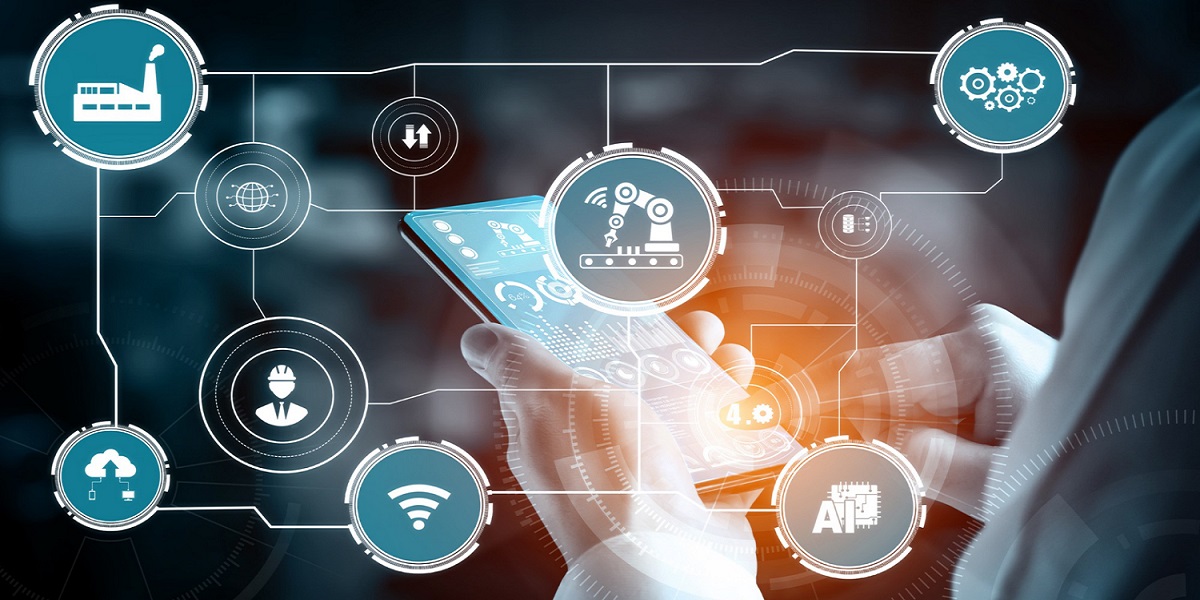
Imagine a world in which everyday objects are globally interconnected by ideals for sharing information and responding to user needs. This is what the Internet of Things (IoT) promises to deliver-a revolutionary state that is invincible and radical for our existence. Smart Homes, wearable devices, industrial automation, and the smart city concept are all part of IoT, connecting billions of devices in the process, hence a huge downpour of data. However, relying only on centralized cloud computing to process this data is a challenge because latency increases, bandwidth becomes a bottleneck, and security vulnerabilities arise.
This is where edge computing comes in - a game changer. The farther away the central processing from its source, the more difficult things become; in this way, edge computing comes to bypass limitations and opens all the IoT system’s full capacity. This article will major on how real-time applications are enabled by edge computing, security, and enhanced efficiency.
Edge computing means that data processing occurs as close to the source of the data as possible, unlike cloud data centers. Moreover, rather than transmitting large amounts of data toward remote locations, edge computing brings the computational power nearer to the device and sensors that generate the data. Such an approach is thousands of miles away from the cloud computing model of having a centralized server driving the data processing and storage.
The basic theme of edge computing is distributed computing. By distributing the processing power into multiple locations, all edge computing has various flavors and implementations. Edge deployments implement various implementations of a micro data center constructed in some managed geographic area, with fog computing extending the edge computing beauty of cloud computing. This distributed architecture allows for high-speed data processing, very low latency, and great responsiveness for your IoT applications.
Having set up the stage of edge computing, now is the time to identify why edge computing is critical for the future of IoT.
Latency is greatly reduced in edge computing because data processing occurs locally, near the source. The absence of the need to send the data to a remote cloud-based data center often causes delays in processing due to network congestion and sending times. Instead, edge devices directly process information. This is a critical application when the system needs real-time response such as autonomous vehicles where even a slight delay in processing sensor data can lead to serious consequences. In industrial automation, it will enable real-time monitoring and control of machinery to optimize production processes and minimize downtime
It reduces the amount of data transmitted to the cloud significantly. By processing data locally, only the most critical information, such as aggregated results or alerts, needs to be sent to the cloud. This not only conserves valuable bandwidth but also reduces network congestion, leading to more data transfer across the IoT ecosystem. Reduced bandwidth consumption translates directly into lower operational costs for businesses, as they can minimize their reliance on expensive high-bandwidth connections.
Edge computing enhances the security of IoT systems by reducing the exposure of sensitive data to outside threats. Since these devices perform computations at the edge, it lessens the risk of breaches due to data transfer over perhaps insecure networks. This is especially crucial for applications involving sensitive data, like health records or monetary transactions. Edge computing also enables more granular control over data access and enhances the ability to implement localized security measures, further strengthening the overall security posture of the IoT network.
Edge computing will allow seamless scaling of IoT networks. The increase in the number of connected devices is exponential and can easily get overwhelming for central cloud infrastructure. Edge computing enables the processing to be distributed to multiple locations to scale the network more efficiently. This architecture is distributed processing which can handle increases in IoT network demands without reducing performance, and the number of devices and the volume of data continue to rise.
Edge computing equips IoT devices with richer offline functionality to function even when the network connection is poor or not available at all. Applications in remote areas, such as agricultural remote sensors or environmental monitoring systems in a remote area, are greatly in need of such functionality. When data is processed locally and decisions are made, edge devices continue to work as expected during outages and no data is lost.
Edge computing significantly reduces the costs associated with data transmission and storage. By minimizing the amount of data transmitted to the cloud, organizations can significantly reduce their bandwidth costs. Furthermore, by offloading processing tasks to edge devices, the reliance on expensive cloud computing resources is diminished. This translates into reduced operational expenses and improved return on investment for businesses deploying IoT solutions.
The transformative potential of edge computing becomes evident when we examine its practical applications across a wide range of industries, from smart cities and healthcare to autonomous vehicles and industrial automation.
Edge computing plays a pivotal role in enabling the functionality of smart cities. In traffic management systems, edge devices deployed at intersections can process real-time data from sensors and cameras to optimize traffic flow, reducing congestion and minimizing travel time. Smart grids leverage edge computing to enable real-time monitoring and control of power distribution, optimizing energy usage and minimizing disruptions. Additionally, edge devices can be installed to monitor the quality of air and water, gather environmental data, and help quickly respond to environmental disasters.
In the healthcare sector, edge computing allows for a host of applications including remote patient monitoring, telemedicine, and real-time diagnostics. Wearable devices that are embedded with edge processing capabilities can constantly monitor vital signs and send vital information to healthcare providers in real-time. This enables early and timely detection and intervention of diseases, thus achieving better patient outcomes. Edge computing also allows medical devices with great diagnostic capabilities for portability from one place to another, spreading quality healthcare out to remote underserved areas of the world.
It revolutionizes agriculture to enable edge computing and carry out precision farming. So, by fitting edge devices in farms, one can monitor real-time data about soil moisture, temperature, and weather conditions. After processing locally, the data can optimize the irrigation schedules, fertilizer application, and pest control strategy. In this way, this edge computing supports data-driven decisions based on real-time data and yields increased crop production with efficient usage of resources and sustainable agricultural practices.
In the industrial sector, edge computing empowers advanced manufacturing processes, including industrial automation, predictive maintenance, and quality control. Edge devices deployed on the factory floor can collect data from sensors on machinery, enabling real-time monitoring of production processes, identifying potential equipment failures, and optimizing production schedules. This not only improves efficiency and productivity but also enhances safety and reduces downtime, leading to significant cost savings for manufacturers.
Edge computing changes the retail landscape through experience-based tailoring for customers, optimizing inventory levels, and overall in-store operations. With edge devices used in-store, it is able to capture customer behavior, determine real-time inventory levels, and tailor offers according to customers’ preferences, resulting in improved customer experience, sales, and reducing under-and-overstocked items with waste.
Edge computing is critical for the development of advanced transportation systems, including autonomous vehicles and intelligent traffic management. Edge devices play a vital role in processing real-time sensor data from cameras, radar, and lidar to make autonomous vehicles make crucial driving decisions. Optimizing traffic flow is another role of edge computing, through the real-time analysis of traffic patterns, identifying hotspots of congestion, and dynamically adjusting traffic signals to make transportation safer and more efficient.
While edge computing offers numerous advantages, several challenges must be addressed to ensure its successful implementation and widespread adoption.
A large number of edge devices and platforms are being developed today. This diversity, in turn, is a great challenge in the aspect of interoperability. Standardization is highly necessary to have seamless data transfer and integration from one edge device to another as well as with different platforms so that the IoT network is optimized in terms of efficiency and scalability. Common protocols and interfaces between edge devices ensure smooth communication and data flow.
Edge computing introduces new security challenges due to the distributed nature of the network. The proliferation of edge devices increases the attack surface, making the network more vulnerable to cyberattacks, such as data breaches, device hijacking, and denial-of-service attacks. Protecting sensitive data, ensuring device security, and implementing robust security measures at the edge are critical to maintaining the integrity and reliability of IoT systems.
As the number of IoT devices continues to grow exponentially, managing and scaling edge computing infrastructure becomes increasingly complex. Ensuring that the network can accommodate the growing volume of data, maintain consistent performance, and adapt to changing demands requires scalable and flexible solutions. This necessitates the development of advanced management tools and platforms that can effectively monitor, manage, and scale edge deployments.
The rapid growth of edge computing has created a significant demand for skilled professionals with expertise in edge computing technologies, IoT, and cybersecurity. Bridging this skill gap requires a concerted effort to educate and train a new generation of professionals with the necessary skills to design, deploy, and manage edge computing systems. Investing in education and training programs is crucial to ensure a skilled workforce that can effectively leverage the potential of edge computing in the future of IoT.
The future of IoT is inextricably linked to the advancements in edge computing. Here are the current trends in the future of edge computing in IoT:
Integration of 5G and Edge Computing: The emergence of 5G networks will significantly enhance the capabilities of edge computing. 5G’s high bandwidth, low latency, and increased reliability will enable faster data transfer between edge devices and the cloud, facilitating real-time applications with demanding performance requirements, such as augmented reality, virtual reality, and autonomous vehicles. 5G will also enable the deployment of a denser network of edge devices, further enhancing the reach and responsiveness of edge computing.
Rise of Edge AI: The integration of Artificial Intelligence (AI) and Machine Learning (ML) at the edge is poised to revolutionize IoT applications. Edge AI empowers devices to perform sophisticated data analysis and make intelligent decisions locally, without relying on cloud connectivity. This enables real-time insights, faster response times, and improved decision-making in applications such as predictive maintenance, anomaly detection, and personalized experiences.
The Role of Cloud-Native Technologies: Cloud-native architectures, such as containerization and microservices, are playing an increasingly important role in edge computing. These technologies enable the deployment and management of edge applications more efficiently, providing enhanced scalability, flexibility, and portability. Cloud-native approaches also facilitate the integration of edge computing with cloud services, enabling hybrid and multi-cloud deployments that leverage the strengths of both paradigms.
Emerging Trends: The future of edge computing will be shaped by a variety of emerging trends, including the increasing adoption of blockchain technology for secure and transparent data sharing, the development of application-specific edge devices tailored for specific industries and use cases, and the rise of edge computing platforms that provide a unified framework for managing and orchestrating edge deployments.
In addition to being the latest technology, edge computing is also a paradigm shift in how IoT should be done. Bringing closer the processing powers to the sources changes the character of IoT applications. It introduces real-time response, security improvement, and increases efficiency. As the number of connected devices continues to proliferate, edge computing will be crucial for managing the data deluge, optimizing network performance, and unblocking the full potential of the IoT.
The future of IoT is tied hand in hand to the development and evolution of edge computing, designing a world with interconnected devices into our lives so that innovation would be across sectors and change our way of life, work, and interaction in the world around us.
